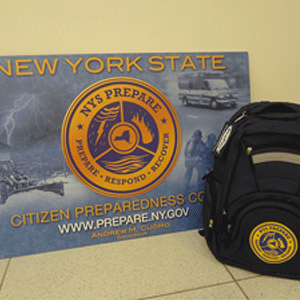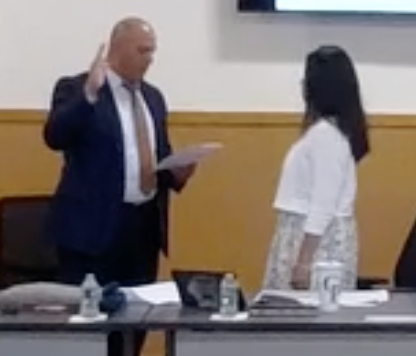In a disaster like Superstorm Sandy, one of the greatest detriments to morale can be the feelings of utter helplessness and the loss of control.
However, at Westbury’s “Yes We Can” Community Center recently, a new program instituted by New York State aimed to restore that sense of control. The Citizen Preparedness Corps was established by Gov. Andrew Cuomo after Hurricane Irene and Superstorm Sandy, with the intent of training New York residents to be self-reliant in an emergency.

Last week, Captain Rafael Castillo of the New York National Guard headed up an informational lecture and Q&A session at the Community Center that drew a packed house.
“Our goal is to instruct citizens on how to sustain themselves for seven to 10 days,” Castillo said. “During Sandy we noticed that many people had lost power for up to 10 days or more, and resources were limited.”
Nassau County Legislator Siela A. Bynoe noted that with the aftermath of Sandy, families had to go a long duration without hot water, lights, electricity and heat.
“During emergencies, we find that first responders have their hands full,” she said. “We feel that if we are better able to equip our community residents to take care of themselves in the event of an emergency, it better allows the responders to go to those who are in the most need. This is an opportunity for people to feel empowered during emergencies.”
 Three main disaster categories were covered at the evening’s meeting — natural (hurricanes, tropical storms, flooding, snow), man-made (terrorism, failures of building structures or bridges), and technological (blackouts, communication failure). However Castillo said there was one key element to surviving that each of these calamities shared.
Three main disaster categories were covered at the evening’s meeting — natural (hurricanes, tropical storms, flooding, snow), man-made (terrorism, failures of building structures or bridges), and technological (blackouts, communication failure). However Castillo said there was one key element to surviving that each of these calamities shared.
“Be well-prepared, and be prepared in advance,” he said. “Don’t wait until a day or two before the event happens or even the day of. Start now, but if an evacuation notice is given, get out as soon as possible.”

The primary means of preparation covered at the event was in the form of a “Go Kit,” which consists of a portable container pre-filled with vital survival gear. Attendees at the event were presented with their own Go Kits in the form of a free backpack provided by New York State. Each backpack included a first-aid kit, goggles, pocket radio with batteries, food bars, an emergency blanket, and other items to help citizens in the immediate aftermath of a disaster.
“The Go Kits contain basic items that will allow people to be better prepared…however, the kits should be modified by each individual to suit their own individual needs,” Castillo said. “If you wear eyeglasses or take specific medication, you should include spares in your Go Kit, and you should build a Go Kit for each member of your family. Each kit should be robust and contain enough food and water to last seven to 10 [days]. Include medical and hygiene supplies, tools, a change of clothes, a hand-crank radio, and an entertainment item such as a deck of cards.”
One handy tip Castillo gave in the event of a worst-case situation: don’t rely on your cell phone. Make sure that you keep a written record of your phone’s contact list in case you are unable to recharge your phone and find yourself using a landline telephone or other means to get in touch with loved ones.
For more information on the program and emergency preparedness, visit www.nyprepare.gov.



































